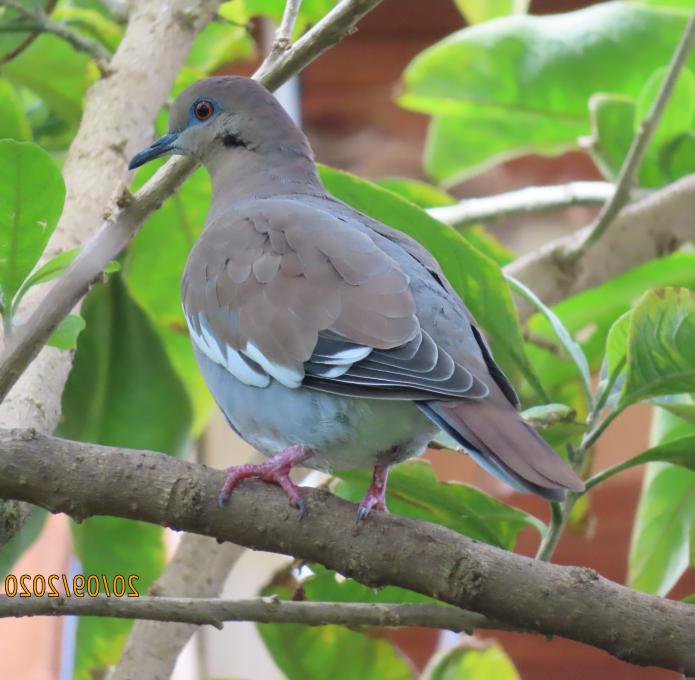The Cornell Lab Bird Academy › Discussion Groups › Joy of Birdwatching › Activities: Bird ID Practice
-
For activity 1, I found a Snowy Egret and a Black-crowned Night Heron. Snowys are easy to recognize by their long neck and legs. The Night Heron is more rounded and hunched with a long plume behind it. Activity 2 were all black and white sea birds: Bufflehead (white on the back of head), Western Grebe (white on the front neck), and a Surf Scoter (white on back of neck, and between eyes). Activity 3 : Buffleheads diving into the harbor, Black Phoebes darting for insects, and California Towhees scavenging under the bushes. Activity 4: Say's Phoebe recognized by it's shape which is similar to the more common Black Phoebe, its salmon-colored underbelly, and its crazy acrobatics diving for insects around sunset.
-
For activity one I chose Killdeer and Mourning dove. Their shapes allow you to easily tell them apart. The killdeer is tall and slender with short stocky neck and longer tail. The dove is rounder and has a longer neck with a smaller head. For activity two I chose red: Red-winged black bird (red on the shoulder), Northern Cardinal (red with black face), Rose-breasted Grosbeak (red breast) For activity three I chose: American kestrel (soaring and hovering over grassy field), Horned lark (scratching and nibbling along side of road), Northern Cardinal (visiting my bird feeder for sunflower seeds) For activity four I chose Eastern Meadow lark: stocky with short tail, long bill and legs, bright yellow underparts with black breast and and striped head, found in grassy fields and prairies, distinctive call
-
In the first activity, a birds that can be easily identified in the panama cams, are the chachalacas and the hummingbirds. In the second activity 3 birds that have the same colors are gray, brown , and white, like the southern pochard the ring- necked duck and the lesser scaup In the fourth activity ( guess this ) I describe a pink bodied bird with grey bill, larger than a goose , with a flat beak
-
Where I live on the west coast of Canada, we seem to have several species of ducks that are black and white. I have trouble identifying them unless I have a species chart with me. I've learned that noticing their specific markings, especially on their heads, is very important for identifying who I am looking at. I also find that if I take a close-up photo of the bird, I can then take my time identifying which one it is with my field guide and/or with Merlin. Now I just need to commit each species of black and white ducks to memory (Bufflehead, Barrow's Goldeneye and Common Merganser).
-
I chose to complete Activity #3. We live in Central NY and have several frequent fliers to our feeders at this time of year. The three birds that I have identified searching for food are a dark eyed junco, a red-tailed hawk and a red-bellied woodpecker. The juncos in our yard either sit on a perch on our feeder to eat seeds or they spend time under the feeder picking up any seeds that spilled into the snow. They have a behavior of hopping forward and back to move the snow and uncover any seeds that fell. They almost dig a little indent for themselves where they snuggle in and shield themselves from the wind and snow. The red-tailed hawk that lives in our area was perched in a barren tree yesterday for over 2 hours watching for prey to happen by. He could look over a snow-covered field from his vantage point as well as watch over our open back yard. We have yet to see him catch anything but we have found, on 2 separate occasions, an area of snow covered with feathers and blood where he had a meal. We could make out feather marks in the snow. The third feathered friend we've seen today is a robust male red-bellied woodpecker. He has striking black and white bars down his back and a brilliant red on the back of his head. He enjoys hanging from the suet and will frequent the feeder with a seed mix as well.
-
I was not familiar with the Junko until this lesson, and spying them in my yard. With help from Merlin, I was able to identify this bird. I also have learned to identify the house finch. The section on how to use binoculars was quite instructive and helpful! I've also learned to identify the downy woodpecker and distinguish it from the hairy woodpecker. The downy woodpecker likes the suit feeder just outside my patio glass door.
-
I agree that the section on binoculars was interesting. (I had NO IDEA that such a thing as a diopter even existed!) Do you think you'll be getting a pair of binoculars for birdwatching? I really want to, but there are SO MANY choices!
-
-
Activity 1: Blue Jays and Starlings are in trees outside my window, now. The jays often have a prominent crest and have a more slender overall shape with medium to long tails. The starlings have no crest and tend to have a fuller body with a short tail. Activity 2: The male Downy Woodpecker, the female & male Pileated Woodpeckers, and the female & male Red-bellied Woodpeckers all have red in varying places on their heads. The male Downy has a small red cap on the back of his head. The male and female Pileated Woodpeckers both have large prominent red crests but the male is the only one with a red malar. The male and female Red-bellied Woodpeckers both have subtle areas of red on their bellies. The male has red on his crown and nape, but the female only has red on the nape of her neck. Activity 3: The Ruby-Throated Hummingbird is among my favorites. The hummingbird is so spectacular that I always feel a little as if I have been visited by an angel! My description is as follows: SIZE - tiny - the smallest of birds; SHAPE - long, thin bill, spherical body shape, long wings, relatively short tail, COLOR & PATTERN - bright red throat, black mask, green crown and bright metallic green on upper parts, white belly; BEHAVIOR - hovers to feed on flowers; solitary and aggressive toward other hummingbirds; female cares for offspring in nest; HABITAT - primarily woodland, but visits gardens often; RANGE - throughout eastern U.S. but mainly in Florida and Mexico in the winter; SOUNDS - males chirp early in the morning; both males and females make humming sounds.
-
Watched house finches, white-crowned sparrows, mourning doves, and a squirrel share the bird feeder this morning. The house finches actually perched on the feeder, while the sparrows hopped on the ground pecking at seeds knocked out by the squirrel. The mourning doves sat on a fence waiting for all the other birds to leave, then pecked on the ground.
-
A1: Carolina Wren compared to Black Vulture. Size, Wing Span, Talons, Color are a few physical differences. The vulture sours and uses air currents in its search for food, while the Carolina wren, forages around in seemingly every nook and cranny it can find. A2: Cardinal, Red Bellied Wood Pecker, Downey Woodpecker. All have red in their colors or markings. The Cardinal being almost completely covered in red. While the Red Bellied Wood Pecker sports a crown of red extending into its nape. Finally the Downey Wood Pecker having a cap of red on its head. A3: Black Vulture , soaring and searching the air currents for its meal. The Carolina Wren searching wood piles, rock piles, under decks, steps and other tiny haunts to find a morsel of sorts. Then there is the European Starling, looking for a free hand out at the bird feeder, being a thief and stealing scratch grains from the chicken feeder. A4: American Kestrel: Robin sized, perched on power-line overlooking two ponds and a grass/weed mixed field. Hovering and Stooping as it attempted to capture its prey.
-
1) Two birds that I can tell apart by size or shape are the Canada Goose and the Trumpeter Swan. (I'm obviously a novice.) 2) Two birds that have red are the: Red-bellied Woodpecker - red cap extending down to the nape of the neck Downy Woodpecker - just a touch of red on the back of the head; mostly black and white 2) 3 birds that were searching for food are the: Red-breasted Nuthatch; Redpolls; and 4) One of my favorite birds is the Goldfinch: Size: small - between a sparrow and a robin Colors: gold & black habitat: Minnesota area where I'm from Sounds: high pitched
-
I struggle to differentiate between downy woodpecker and hairy woodpecker, particularly because both species are very busy and move around quickly. The difference in their beaks, Hairy having a longer beak seems to make the identification easier. I double checked the range of each species, but again that is very similar.

-
Activity 1 : The two birds I saw at the bird feeder I can tell apart by shape, White-breasted Nutchatch and Blue-Jay. The shape of the Nuthatch of course is usually facing downward or upside down on a truck. The Jay has a completely upright shape with a distinct crest. The sizes of course also make them distinctly different, as the Nuthatch is sparrow sized and the Blue-Jay, Robin sized. Activity 2 Three different species: Black-capped chickadee, Tufted titmouse, and White-breasted nuthatch. All three species have white, black, and gray. However, looking specifically at black, the Nuthatch and Chickadee both have black caps, which is absent from the Titmouse, whose black is limited to just above the beak in a small circular pattern. The black on the nuthatch is limited to a long cap, while the Black-capped chickadee has both a cap and a throat patch. Activity 3: Dark-eyed Junko, Black-capped Chickadee, and White-breasted Nuthatch. The Nuthatch tends to stay on the tree, search for bugs or seed, but limited to on something they ca search upside down. The Junko seems to always be on the ground. I have rarely seen them on a feeder. Whereas the Chickadee seems to variable, They will feed in the trees, on feeders, on the ground. Very diverse behavior. Activity 4 - Black-capped chickadee shape and size, upright, smaller than a sparrow. Black on cap, throat patch, with buff on sides. Behavior- variable feeding style, but always in a group.
-
New to this...on Thursday during a hike at Warsaw Caves, Ontario I saw a Pileated Woodpecker. Quite a big bird compared to other woodpeckers. At first I thought it was a red-headed woodpecker but then noticed only the crest was red and it was larger. Very exciting. Also I can now identify the Dark Eyed Junco which I'm sure is very common but I have never looked closely enough at birds to notice this one. And this is what happens when everything in the province is closed....new hobbies, new knowledge :)
-
Yesterday, I realized the difference between fish crows and American crows, and identified the former by call, but then saw the difference in shape. Sounds can be so helpful and I want to study them more using some of the tools mentioned. Liz, Melbourne Beach, FL
-
Hello, fellow birders! Please say where you're located in your posts! I'm in Brooklyn, NY, and have spent a lot of time in this past crazy year in the park and cemetery near me looking at birds. Just starting the Cornell course and enjoying it. The heron family are my favorite. We see great blues, black-crowned night heron, green heron, and egrets in the summer (great blues year-round). The green heron have a unique call that sounds to me like sheet of thin metal vibrating. We also have hairy and downy woodpeckers and flickers, and the ID exercise between the hairys and downys in this lesson was extremely helpful. Even being in a big city, I see so much if I keep my eyes open. Looking forward to learning more.
-
It's pretty miserable here today, so I turned on the Monterey Bay Aquarium's aviary live cam (their Youtube channel is queued up for me because, well, otters...). Anyway, it was a really good opportunity to get used to my field guide and start to notice what helped me distinguish the birds, especially the shape and size of the bills, which ended up being really useful in narrowing down what I was looking for. I also started picking up on the feeding behavior - particularly for the Avocet and the Turnstone.
-
I started watching this live cam footage of the Paton Center in Tucson AZ when my hummingbirds left the the season. I not only get to see species of hummingbirds that do not travel to Arkansas, but fun surprises like this red-bellied woodpecker (that I didn't know would drink nectar) show up. I've seen wild pigs walk by the live stream. I also forgot to turn it off one evening and walked past to see bats drinking the nectar- repeatedly). I think I can tell the tufted titmouse by it's shape alone. It is my most frequent feeder this fall and due to the "tuft" they are easy to spot. I think I could also tell a Carolina Wren from it's shape. Its size and unique longer, slender, and curved beak make it easy to spot.


-
I watched one of the webcams located in Ontario Canada and found a Ruffed Grouse on the feeder. It has a small head compared to its body size. The bird is crow-sized and appears to have a moderately short tail and neck. According to Merlin, it lives in forested areas and is camouflaged in browns and creams to fit into the vegetation and leaf litter found on the floor of a forest. The bird has a small comb on its head. The other bird I have chosen for this exercise is the Northern Cardinal, which visits my local bird feeder and grape vines. This bird has a crest, but it is very prominent compared to that of the Ruffed Grouse. I saw a male this morning, and of course he was brilliantly red with some gray on his wings and black on his face and throat. Northern Cardinals have long tails, almost as long as the body, and the neck and head appear to be the same width, but are narrower than the body. This is a Robin sized bird.
-
I recently discovered that I have both the red-breasted and white-breasted nuthatches coming to my feeders. (Although the red-breasted nuthatch hasn't been around since late October.) I was able to identify them not just by color, which can be a little confusing since the white-breasted still has some red, but by the markings on their heads and eyes. I also was able to identify the female house finches by the markings on their tails and the shapes of their beaks. I learned that cardinals are finches, and I now look at beaks as one way to identify finches.
-
Two birds I can identify by shape now are the Hermit Thrush and the White-breasted Nuthatch. The Hermit Thrush is a frequent visitor to my birdbath, and it’s between a sparrow and Robin in size, with a round body, short neck and small head. It holds its wings in a distinctive way, so that the wing tips protrude diagonally downward below the line of the belly. It’s legs are also longer and more noticeable than a “typical” perching bird, like two thin toothpicks below its round body. Another bird that’s really easy to recognize by shape/behavior is the White-breasted nuthatch, because it tends to perch on tree trunks with its body facing down and its head and long thin beak looking out at an angle from the tree. It has a small, teardrop shaped body with a short tale and not much of a neck. You can see this distinctive profile sticking out on the side of a tree even at a distance.


-
Owls are recognizable by their rounded heads that appear to grow out of their bodies or shoulders, with no neck in between. The Barred Owl, which has a very distinctive call, is large and recognizable. I was fortunate enough to go for a walk early in the morning when it was still dark. I saw an owl shape on top of a substantial wooden sign in front of a neighbor’s house. I realized it was not a piece of wood shaped like an owl as I passed it because it was very round and three-dimensional. I was perhaps 6 feet away from it and my presence obviously bothered it, as it started to stand on first one foot, then the other. It had dark eyes set into a light-colored face; I saw no ears. I observed it for a few minutes, then continued on my walk. When I returned to the area, the owl was gone. I had been hearing the distinctive call of the species for a number of mornings prior to first light. I live in a town in Central Illinois, near a very large park that contains deciduous woods and a couple of ponds. The Northern Cardinal has a distinctive crest that both males and females exhibit, a long tail, and tend to be the first ones to my feeders in the twilight of morning and the females are the last to leave late into dusk. I know them by their sounds before I see them, as they have distinctive calls. There are two males who have visited my yard for the last several years. They have unusual grey markings on their heads, necks, and backs. I think they must be from the same parents, or even a father son; the black at the throat is more of a very dark grey and the other markings are random, like there was a slight genetic glitch. Otherwise, they seem to be like other cardinals.
-
Well it's pretty slim-pickin's here in northern MI at this time of year. But my feeders are alive with our winter residents. The usual suspects: Black-capped chickadee, white and red-breasted nuthatch, blue jay, mourning dove, tufted titmouse, and downy, hairy and red-bellied woodpeckers and the occasional dark-eyed junco-for now. (I should have done this lesson in the spring/summer) Activity 1: SIZE Blue jay=robin-sized, one of the few birds at this time of year that has "color". BCC=sparrow-sized, and using several calls to announce that "their human" just filled the feeders or baited the front porch railing. Activity 2: COLOR WB Nuthatch, BCC and Tufted Titmouse. All of them may not be easily identifiable by a beginning birder but the caps and size of the three, as well as the crest of the titmouse helps to tell them apart. Activity 3: FOOD FINDING The best part of birding in my opinion. Bird behavior. The BCC and Titmouse grab a seed from the feeder and take off to consume it. I've timed the chickadees and it takes them about 15-20 seconds to eat the meat out of the seed. The Titmice fly into heavy cover so I have not seen them eat. The blue jay on the other hand, "swallows" 5-6 seeds and flies off to eat them. I'm curious to know how many they can actually stuff in their gullet. They usually get spooked before they can grab more than 5. Activity 4: FAVORITE BIRD DESCRIPTION It has to be the black-capped chickadee, all year 'round. Besides eating out of my hand, they are fun to watch. There is a pecking order in "my" winter flock. A few may share a feeder before grabbing a seed and then one of the more dominant ones flies in and scares the others away. They also will judge the size if the seed with their beaks and if it isn't large enough for them, them find another until they find one worthy of eating. The nuthatches on the other hand, flick out the small seeds so they can facilitate their seed-finding process the next time they come to the feeder. Chickadees here in Gaylord, MI all look the same and there are no other species. The black cap and bib with the drab colored wings make them easy to ID. In the UP, boreal chickadees can be found but down here, it's just the BCCs. When foraging for insects, they will check every nook and cranny for over-wintering spiders and insects. That's great to watch. Since they are in their winter feeding flocks, they don't sing the "cheeeeeese burger, cheeeese burger" song, but all of those other calls to announce food is here or show their curiosity or displeasure make winter enjoyable.
-
My tufted titmouse visitors at my feeder actually eat the feed on the feeder, they hold it with their feet and then pick it apart :-) Super fun to watch! It's supposed to be "no waste" food so not sure what they are picking unless it's just too big for them.

-
@Misty Great Photo!
-
-
1. Two birds I can confidently tell apart by shape now are the Scrub Jay and the Stellars Jay, the latter of which has a plume and a not as big of a head as the Scrub, who's tale is also rather blunt. The color also gives them away:) 2. Three birds with the same colors in different patterns that I am getting used to are the Black-Capped chickadee, whose black head and chin are very thick, the White Breasted Nuthatch who has a black mohawk and white chin, and the Red-Breasted Nuthatch who has a white eyebrow between a larger black cap than the White-breasted, and all 3 sometimes have buff brown in their underbellies. 3. Juncos feed on the ground, as well as Mourning Doves, especially near feeders, and Nuthatches tend to feed upside down, and at feeders finches tend to feed upright and are really messy. 4. My favorite bird right now would have to be the Oregon Junco, as it was my first real ID and they are back now in my neighborhood, they have a beautiful dark head with a black eye, a pinkish bill, a chestnut colored back, and a buff belly, they would come to my feeder and flick the food on the ground then hop down to eat it, when I finally looked down I noticed many Juncos hopping around on the ground eating, hopping to and from small branches in the bushes outside, and now when I go to birding areas I see them fly up from the ground as I get closer. They make kind of a chip noise that is very regular and long rapid trills that I am starting to recognize by ear now.
-
I identify these birds using a field guide and Merlin, they have similar colors: black, rufous (reddish brown), gray, white, brown. But they have different color patterns.


 Rufous Naped Wren (front of my house), Rufous Collared Sparrow (my backyard) and House Sparrow (3 km from my home).
Rufous Naped Wren (front of my house), Rufous Collared Sparrow (my backyard) and House Sparrow (3 km from my home). -
I can tell apart just by shape the White Winged Dove (my backyard) and the Lesson´s Motmot (my neighborhood)


Read More:
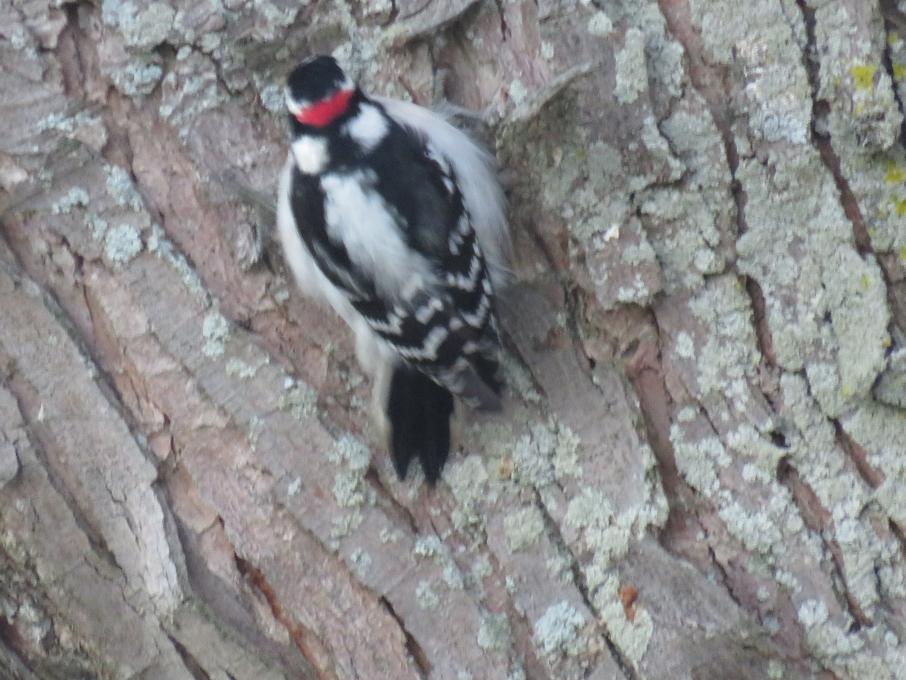
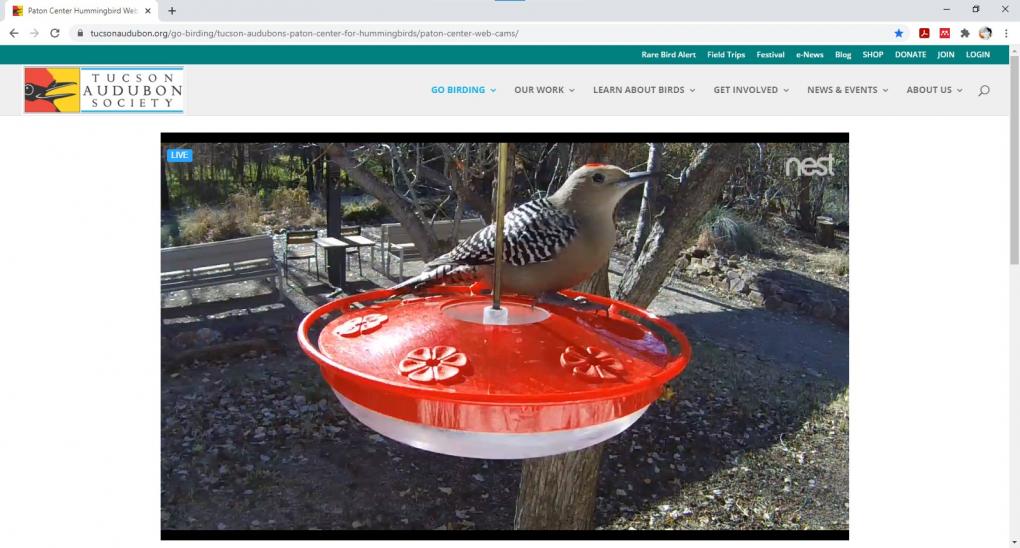

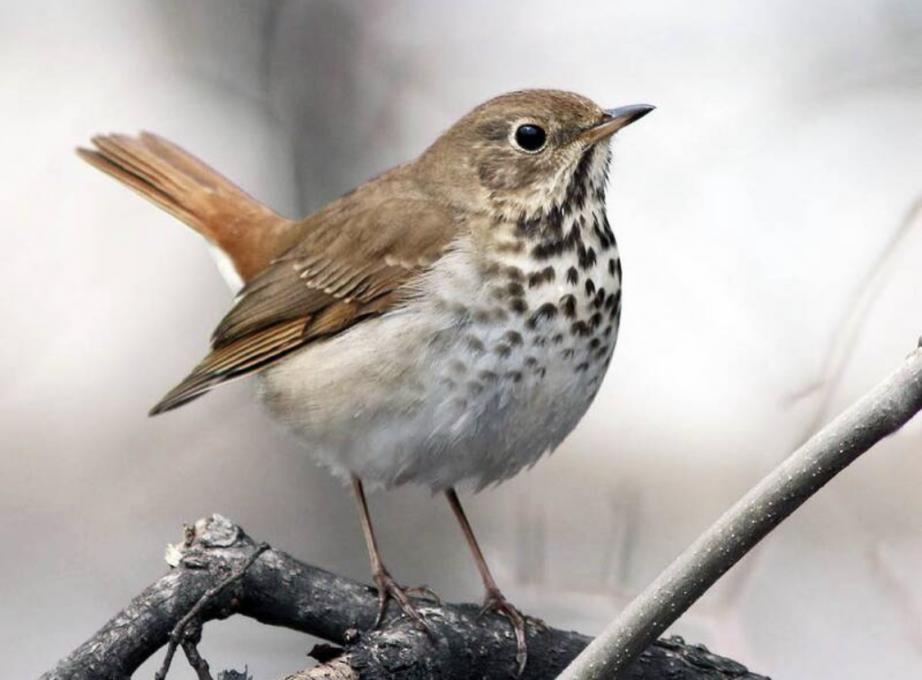

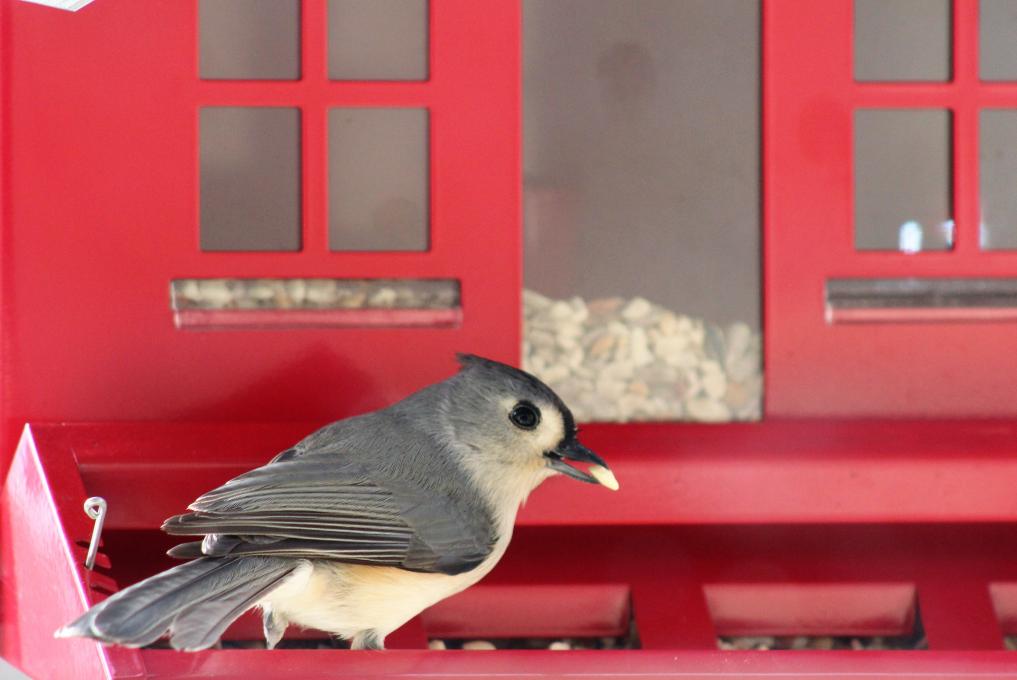
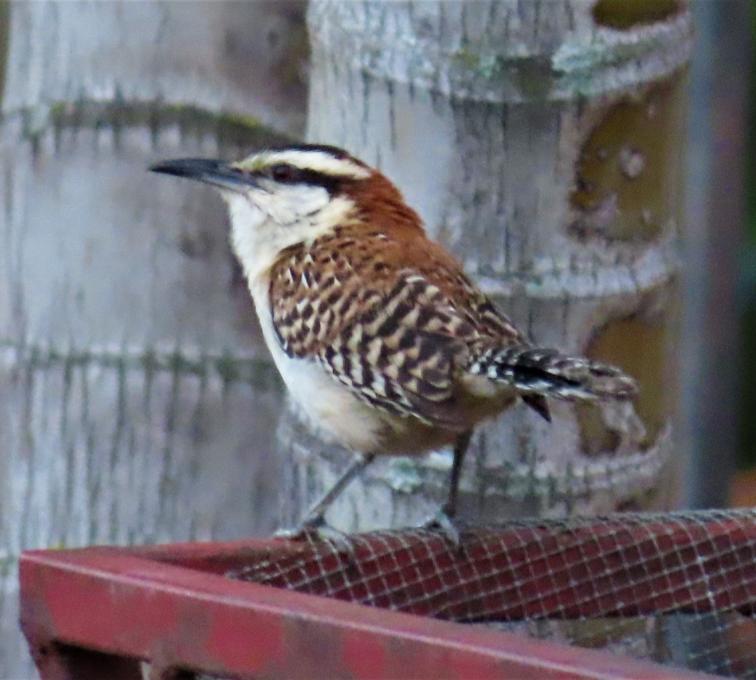
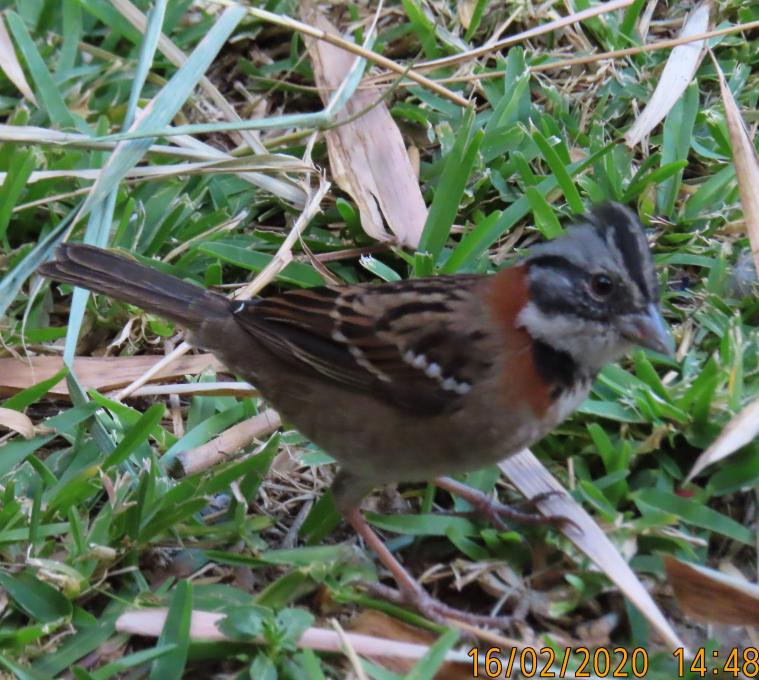
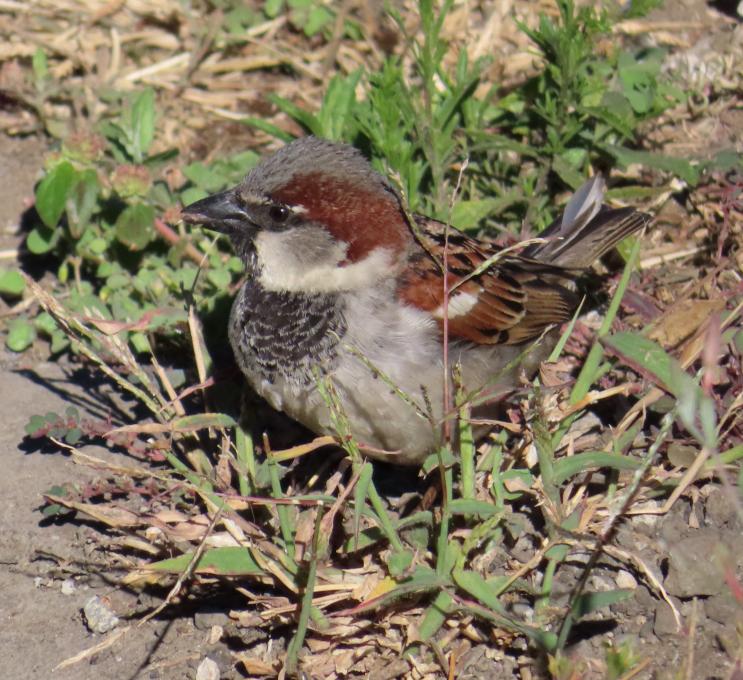 Rufous Naped Wren (front of my house), Rufous Collared Sparrow (my backyard) and House Sparrow (3 km from my home).
Rufous Naped Wren (front of my house), Rufous Collared Sparrow (my backyard) and House Sparrow (3 km from my home). 